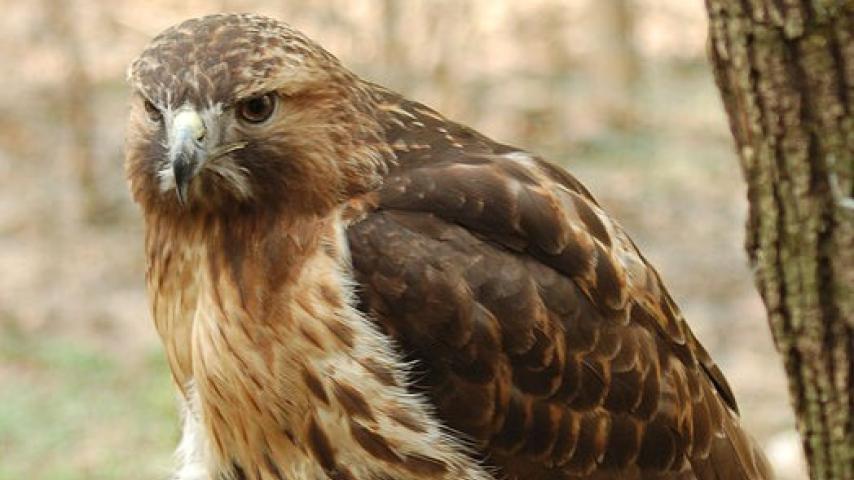Red-tailed Hawk (Buteo jamaicensis)
Predators, high on the food web, are usually relatively uncommon. The Red-tailed Hawk defies convention by seemingly being all over the place. From woodland to plains, lowlands to mountains, and dry to moist habitats, red-tails seem to be everywhere.

KINGDOM Animalia - PHYLUM Chordata - CLASS Aves - ORDER Accipitriformes - FAMILY Accipitridae
Drive on any freeway across most of the North American continent, and you will see the characteristic silhouette of this species on the light standards high above, in position to search for prey in the grassy borders.
Any of these habitats, usually open areas, provide food for red-tails. Their primary prey is small rodents, especially voles where they are common, but ground squirrels and rabbits are important prey as well. Snakes and small birds are commonly taken, and carrion is entirely acceptable. Many Red-tailed Hawks are hit by vehicles while feeding on road kill.
Red-tails hunt from a perch or, less often, from the air. They rise on thermals that form in midmorning and circle around at elevation, their superb vision allowing them to spot prey from some distance. They fold their wings and drop on the prey, extending the legs and feet at the last moment to grab the prey. On the ground, they kill by piercing vital organs with their sharp curved talons.
A pair of Red-tailed Hawks defends a territory of several square kilometers, and this defense probably determines how many hawks can be in a given area. They pack in more tightly in the nonbreeding season, each hawk in its own territory. Males display by diving at a steep angle, shooting upward again, then diving again, repeating this like a sharp-angled roller coaster. Males and females fly together with feet dangling and sometimes grasp talons, tumbling toward the ground while doing so.
Red-tailed Hawks are precluded from occurring in the breeding season in completely open country with no trees or cliff ledges, as these are the substrates for their large nests. The nests are constructed of dead branches and twigs that they break off from trees in flight. They line the nest with fresh green leaves, which may repel nest parasites by the chemicals they produce. Three to five eggs are laid and incubated for four to five weeks. The young remain in the nest for about six weeks before fledging but then remain near it and near the adults for several months.
Red-tails are interesting for their color variations. The species is truly polymorphic, mature adults of both sexes appearing in a wide variety of color patterns. The upperparts are always brown, with a bright rufous tail in adult birds, but the underparts vary from white through reddish and brown to virtually black. Birds of more than one type often appear in a nestful of young ones, darker birds less common.

